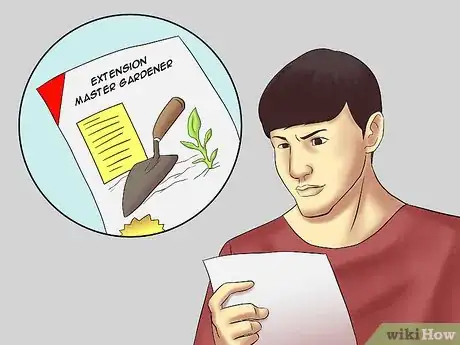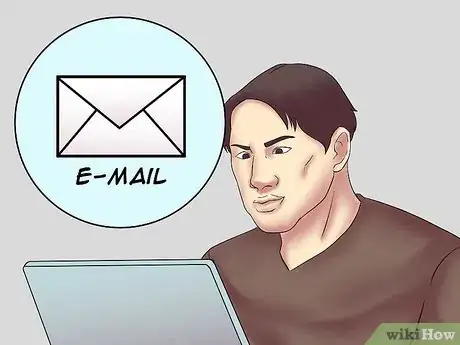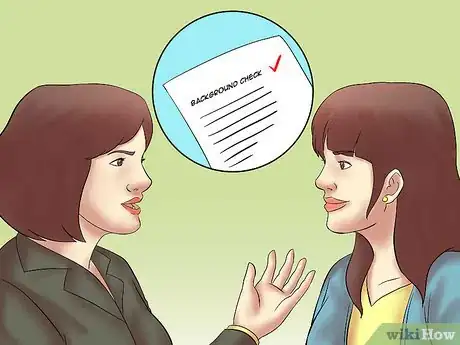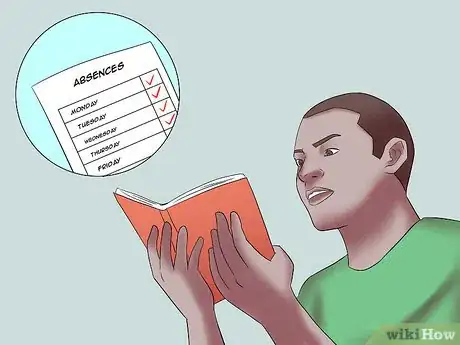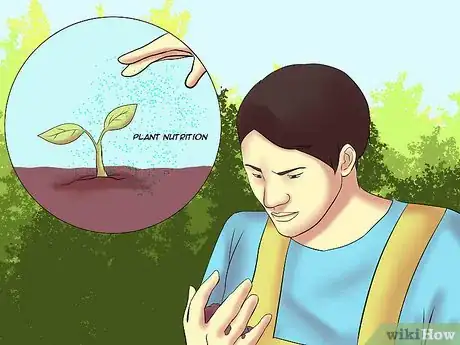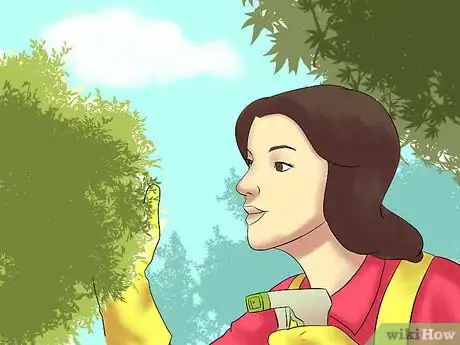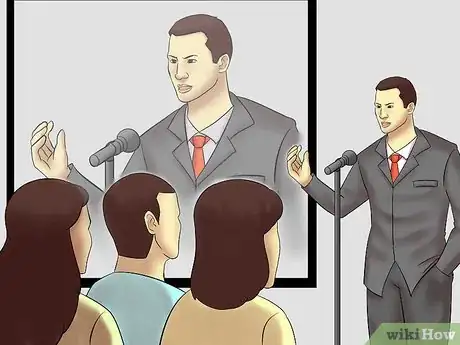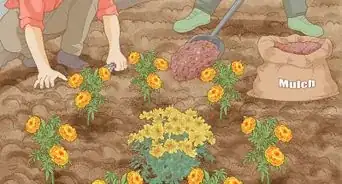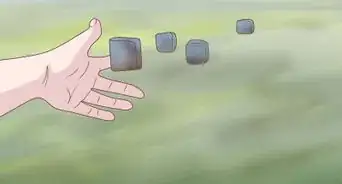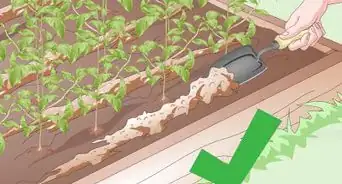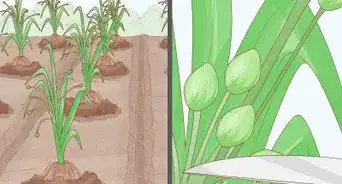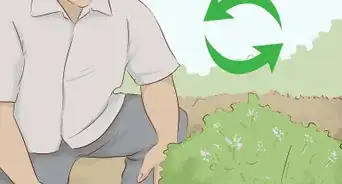This article was co-authored by Andrew Carberry, MPH. Andrew Carberry is a Food Systems Expert and the Senior Program Associate at the Wallace Centere at Winrock International in Little Rock, Arkansas. He has worked in food systems since 2008 and has experience working on farm-to-school projects, food safety programs, and working with local and state coalitions in Arkansas. He is a graduate of the College of William and Mary and holds a Masters degree in public health and nutrition from the University of Tennessee.
There are 7 references cited in this article, which can be found at the bottom of the page.
This article has been viewed 31,252 times.
In 1972, the Extension Master Gardener (EMG) program, which trained volunteers to provide their local communities with horticultural education and gardening assistance, was established in Washington state. As the program spread throughout the United States, it become internationally acclaimed. Today, EMG programs continue to equip volunteers to serve their local communities as gardeners, educators, and leaders.
Steps
Researching, Applying to, and Joining a Program
-
1Find a certified Extension Master Gardener (EMG) program near you. Almost every state within the continental U.S. has an Extension Master Gardener program. Each program is tailored to educate and train future master gardeners about their region’s climate and vegetation. You can find a complete list of programs here.
- Every EMG program is operated by a state land-grant university or that university’s Cooperative Extension Program. Most counties have their own extension as well, so they can help introduce you to the EMG program.
- If you can not find an EMG near you, there are several other master gardener programs throughout Canada and the United States that are not officially affiliated the the EMG program.
-
2Request additional information about the program. Every EMG program has slightly different costs, curriculums, procedures, and requirements. As a result, once you have selected a program, it is always a good idea to contact the program’s representative. Ask the representative to provide you with more specific information about the program.
- Each program’s website should list a contact person and their email address, a phone number for the program’s office, and or a building address. Use this information to contact the EMG program that interests you.
Advertisement -
3Apply to the program. The EMG program does not have a universal application or deadline for applications. Most applications may be downloaded or printed from an EMG program’s website. If you do not have access to the internet, visit your program’s county office and request an application. The application deadline will either be posted online, listed on the application itself, or at the EMG program’s office.
- If you'd like to see an example application, you can find one here
- On the application, you will have to provide general information about yourself.
- You may be required to provide one or more references.
- You may also have to answer a series of open-ended questions. These may include: “Why are you interested in becoming a Master Gardener?”; “Do you have prior volunteer experience?”; or “How much prior gardening experience do you have?”[1]
- Acceptance into EMG programs are not based on prior gardening knowledge or experience. The only requirements are a sincere interest in learning about horticulture and a passion for teaching others about gardening. Use the short answer portion of the application to showcase your great interest in expanding your knowledge and sharing this information with others.[2]
- Proofread your application before you submit it.
-
4Receive acceptance into the program. If you are accepted into the program, the staff at your local EMG program will contact you. Your acceptance packet will likely include additional instructions and information about the program. You may also be required to fill out additional paperwork and or pay the enrollment fee.[3]
- Class sizes vary greatly. Programs that meet in university cities and urban centers have the ability and resources to accept larger classes. Satellite programs that meet in rural counties or small towns must accept smaller class sizes. For example, while the program out of Texas' Dallas County boasts an average class size of 54 students each year, the EMG program operating out of the state's Grayson County must have at least 10 students per class to even run. Contact your local extension office for additional information on class size and retention rates.
- Once you are accepted into the program, inquire about need-based scholarships.
- Contact your program’s representative with any questions or concerns.
- In order to reserve your spot, fill out the paperwork and pay the enrollment fee as soon as possible.
-
5Complete and pass a background check. As a Master Gardener, you will have the opportunity to work with a variety of people. In order to ensure the safety of these individuals, many EMG programs require all of their accepted participants to complete a background check. Upon passing the background check, you will be officially admitted into the program.[4]
Completing the Master Gardener Program
-
1Keep your absences to a minimum. The first part of EMG programs consist of an intensive core course, which equip Master Gardener candidates with the knowledge and skills they need to volunteer in the field. While you are allowed a small number of absences, your presences at each core course is preferred. Excessive absences may result in dismissal from the program.[5]
-
2Complete the core training. EMG programs across the nation share a core training curriculum. Each program tailors the content so that it is relevant and applicable to its state’s climate and terrain. Master Gardener candidates may be expected to complete anywhere from 20 to 66 hours of core training. The subjects covered in these courses may include:
- Lawn Care
- Plant Nutrition
- Pest Identification and Pesticides
- Growing Vegetables and Fruits
- Soil Management[6]
-
3Volunteer in your local community. Master Gardeners provide members of their local communities with gardening advice, assistance, and information. To prepare Master Gardener candidates for their future role within the community, there is a substantial volunteer component to all EMG programs. You may be required to record anywhere from 30 to 66 volunteer hours. If you don't want to do volunteer work, some states will allow you to fulfill the requirement by taking a Pro-hort trainee course for a fee.[7] Volunteer opportunities may include:
- Leading a child or adult educational program
- Manning an information booth at a fair or farmers market
- Answering gardening questions via hotline or email
- Organizing and running educational conferences
- Working at a community garden[8]
-
4Become an official Volunteer Master Gardener. After fulfilling all of the EMG program requirements, you will receive a certificate of completion—this certificate states that you are a certified Volunteer Master Gardener. Your certification is good for one year and must be renewed annually.[9]
Continuing Your Service as a Master Gardener
-
1Attend continuing educational classes and trainings. In order to remain certified, Volunteer Master Gardeners must commit to continuing their horticultural education. The required number of classroom hours varies from program to program. You must document and submit all of your training and classroom hours to your local extension office by the end of the calendar year.
- If you are renewing your certificate for the first time, you may be required to complete additional educational hours.
- As your years of service increase, the amount of educational hours you are required to fulfill may decrease.[10]
-
2Continue to volunteer in your community. To renew the certification, Volunteer Master Gardeners must continue to fulfill their primary role: community liaison. The required number of volunteer hours varies from program to program. Document and submit your volunteer hours to your local extension office by December 31 each year.[11]
-
3Attend EMG conferences and meetings. Every year, there are numerous gardening conferences and Extension Master Gardener meetings. These events provide excellent educational and networking opportunities for new and veteran Volunteer Master Gardeners. While Volunteer Master Gardeners are not required to attend garden conferences and meetings, they are strongly encouraged to participate.
Community Q&A
-
QuestionWhat is a 5 step plan to be a master gardener?
 LibstahistoryCommunity AnswerStep1- Be committed, plants need time and effort. Step2-study about different plants and their needs. Step3-free time, plants need looking after make sure your schedule is free enough to do this.Step4- enjoy what you're doing. Step5- becoming a master takes time, don't give up.
LibstahistoryCommunity AnswerStep1- Be committed, plants need time and effort. Step2-study about different plants and their needs. Step3-free time, plants need looking after make sure your schedule is free enough to do this.Step4- enjoy what you're doing. Step5- becoming a master takes time, don't give up.
References
- ↑ http://www.mastergardener.iastate.edu/become.html
- ↑ http://duval.ifas.ufl.edu/lg_master_gardener.shtml
- ↑ http://www.mastergardener.iastate.edu/become.html
- ↑ http://www.mastergardener.iastate.edu/become.html
- ↑ http://extension.missouri.edu/p/MG1
- ↑ http://www.mastergardener.iastate.edu/become.html, http://extension.oregonstate.edu/benton/horticulture/mg
- ↑ http://www.extension.iastate.edu/mastergardener/become-master-gardener
- ↑ http://www.mastergardener.iastate.edu/become.html, http://extension.oregonstate.edu/benton/horticulture/mg
- ↑ http://www.mastergardener.iastate.edu/become.html
About This Article
If you want to become a master gardener, you don't need prior knowledge or experience, just a passion to learn about gardening and to teach others to garden. To get started, research certified Extension Master Gardener programs, which can educate and train future master gardeners about their region’s climate and vegetation. Once in the program, complete the core training, which may include curriculum on lawn care, plant nutrition, or soil management. After finishing your core requirements and volunteer hours, you'll earn your certification. For more tips from our Professional Gardening Reviewer, including how to volunteer in your local community during your master gardener training, keep reading!
